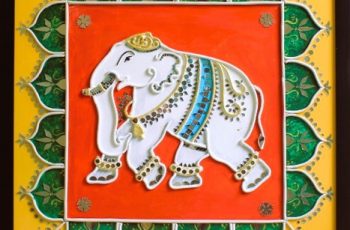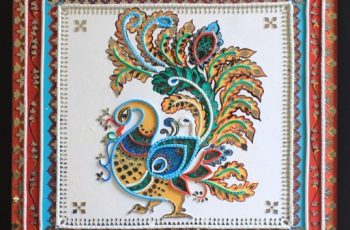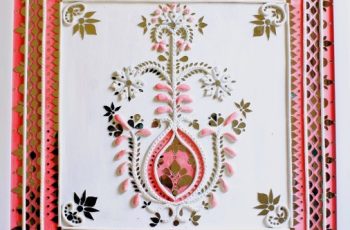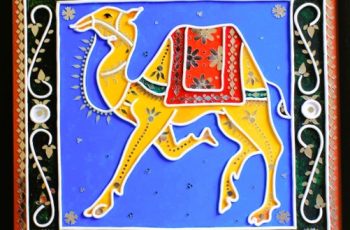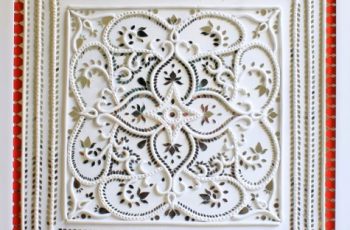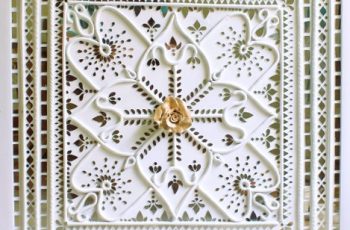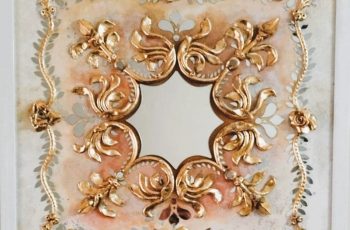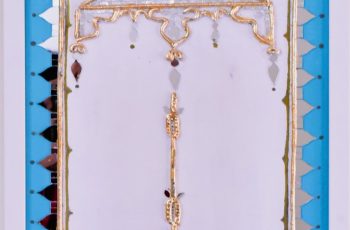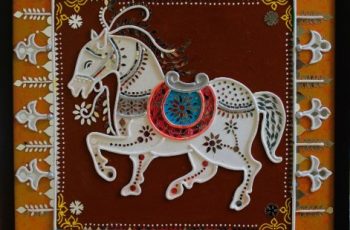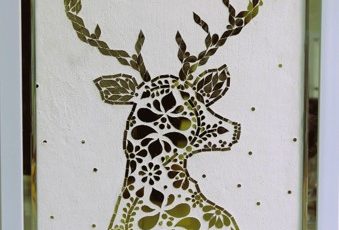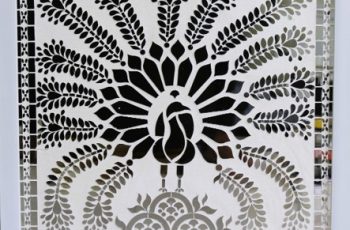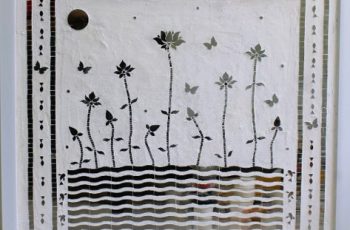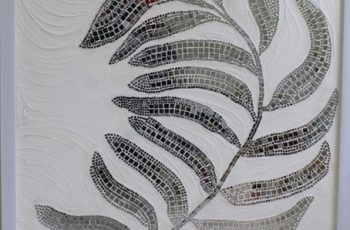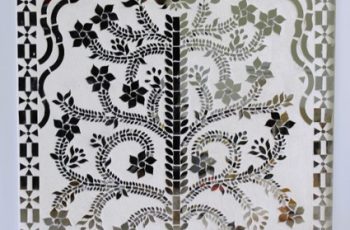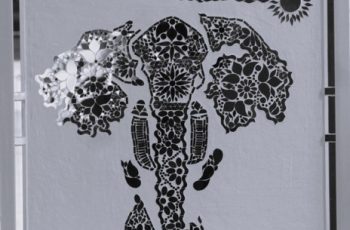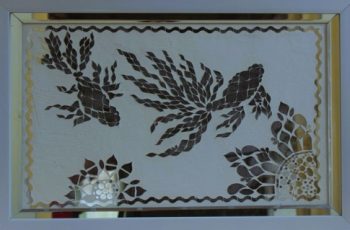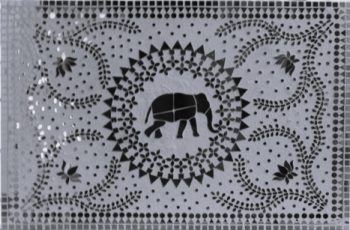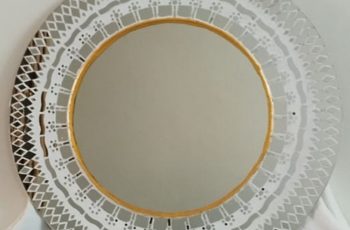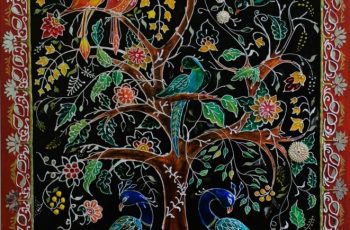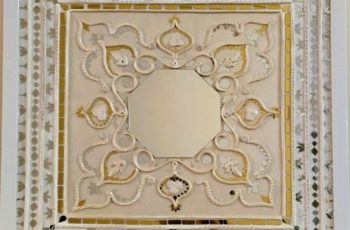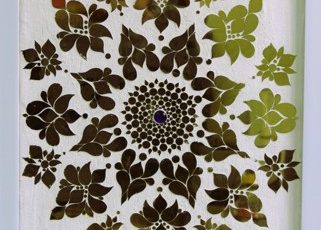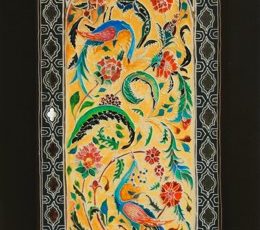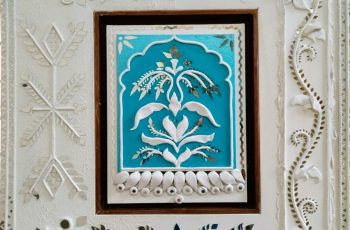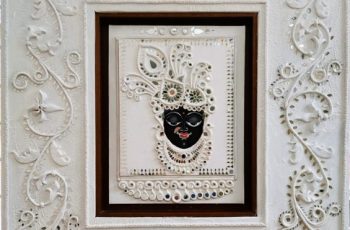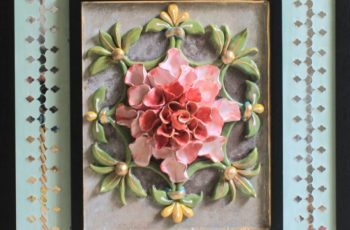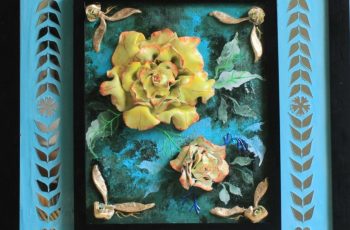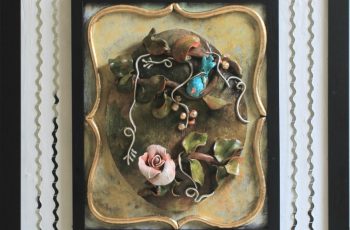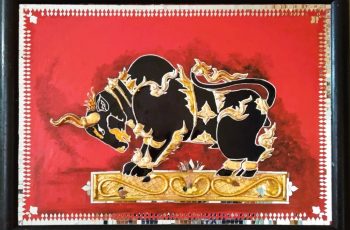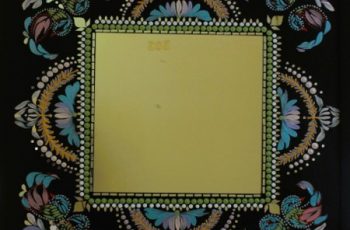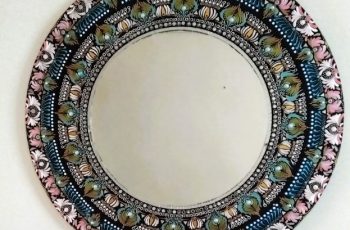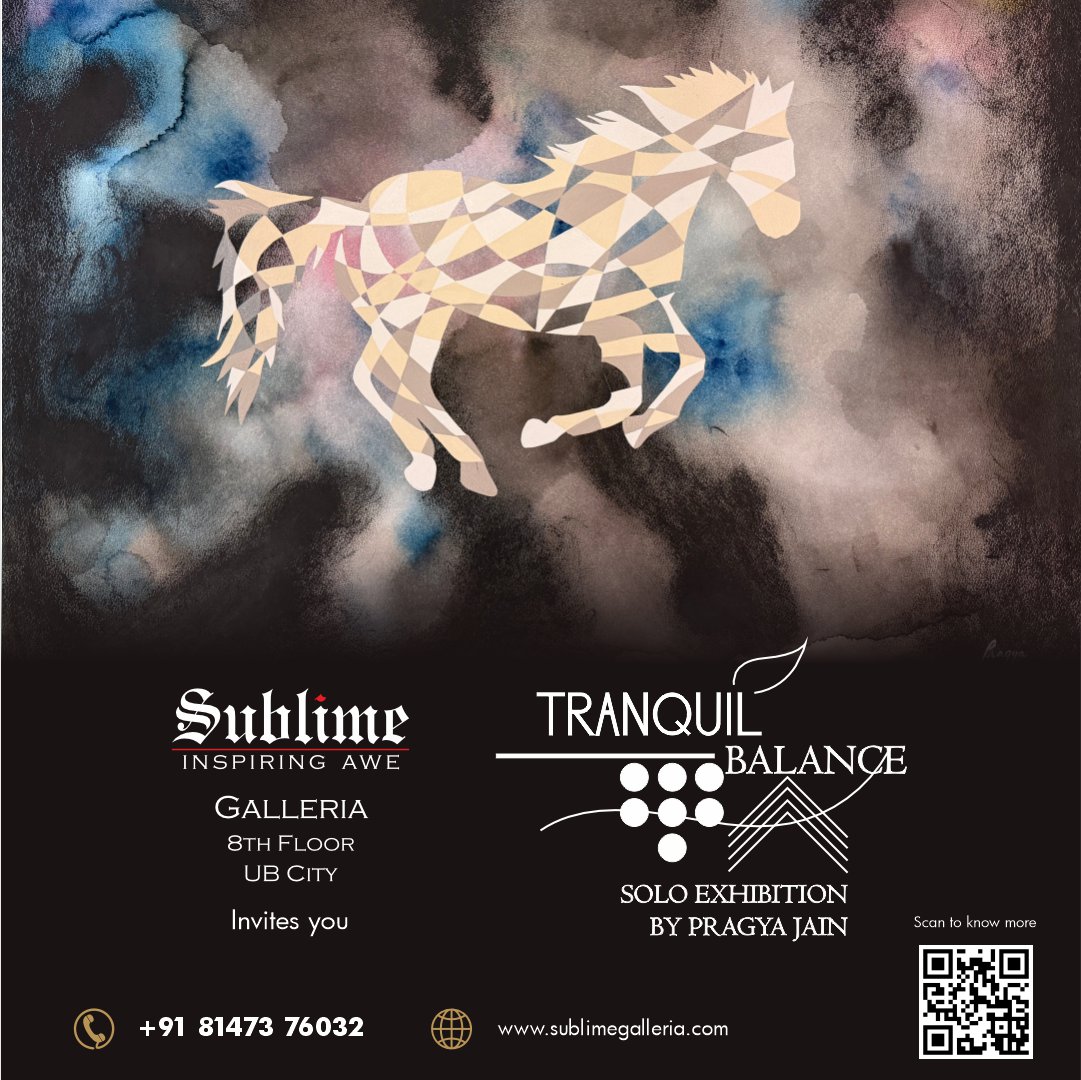Sreedevi Balasubramanian
Sreedevi Balasubramanian is a self – taught artist who has learned all things pertaining to art directly from the source. Being an Army officer’s wife she had the advantage of visiting places from where the rich Indian arts originated. Be it Lippan from Gujarat, Thikri from Rajasthan or Pattachitra from Raghu Rajpur, Odisha. She has exhibited all over India, and her work has also been exhibited in Dubai and Florence.
1. Lippan Kaam –
Traditional folk art, originated from Gujarat, made using camel and donkey dung mixed with natural clay to make dough. The designs are enmeshed with small mirrors which thereafter are used to adorn both inside and outside walls of mud huts to reflect back sun’s harsh rays and thus kept the home cooler during summers. In todays time the folk art has found its way into modern homes and hearts.
2. Thikri Art –
Thikri has its origins from Rajasthan, where coloured glass pieces and normal mirrors are inlaid on walls and panels to create elaborate, ornate designs. An art reflecting luxury, it has its origins from Mughals era. Seeshamahal is its classical portrayal. From palaces to ones home, Thikri has found its ways in todays world.
3. Relief Art –
Relief art or Persian relief art is an art in which the sculpted art is attached to a solid background akin to wood or stone carving. Delicate detailing of birds, animals and flora and used to mimic nature. Mostly made of clay and plaster they exclude a timeless aura.
4. Mandala Art –
Mandala in Sanskrit literally means circle. They are more spiritual in making, more about synchronicity, losing oneself in details so as to be found again as a whole when the piece completes. There are various pattern to both learn and make. The more one gets deeper into it, the more patterns emerge.
